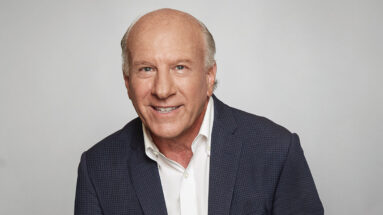May–June 2023
-

An Alternative to Creative Destruction
Magazine ArticleHighlights from this issue
-

How Brands and Influencers Can Make the Most of the Relationship
Brand management Magazine ArticlePaid promotions cause followers to desert. Here’s how to limit the damage.
-

Conservatives Are More Open to Seemingly Inferior Products Than Liberals Are
Consumer behavior Magazine ArticleThey believe in balance—and so think obviously imperfect items must have hidden virtues.
-

The Founders of Bitty & Beau’s Coffee on Building a Business Around Employees with Disabilities
Diversity and inclusion Magazine ArticleA thriving business demonstrates how dedicated and enthusiastic employees with disabilities can be.
-

The 2022 HBR Prize
Magazine ArticleHarvard Business Review is pleased to announce the 2022 HBR Prize winners.
-

The High Cost of Neglecting Low-Wage Workers
Business management SpotlightSix mistakes that companies make—and how they can do better
-

The Obstacles to Creating Good Jobs
Business management SpotlightAnd how courageous leaders are overcoming them
-

“You’ve Got to Set Your People Up to Succeed”
Business management SpotlightAn interview with Tim Simmons, chief product officer of Sam’s Club
-

How to Create a Stakeholder Strategy
Business and society Magazine ArticleA data-driven approach to design, measurement, and implementation
-

Innovation Doesn’t Have to Be Disruptive
Innovation Magazine ArticleCreate new markets for growth without destroying existing companies or jobs.
-

Analytics for Marketers
Technology and analytics Magazine ArticleWhen to rely on algorithms and when to trust your gut
-

How to Design an Internal Talent Marketplace
Technology and analytics Magazine ArticleAlign company needs and employee preferences.
-

The Leadership Odyssey
Leadership Magazine ArticleIt’s not easy to become less directive and more empowering. Here’s how to navigate the challenges.
-

Radical Optionality
Strategy Magazine ArticleA new era of competition requires a highly dynamic approach to strategy.
-

How Brand Building and Performance Marketing Can Work Together
Brand management Magazine ArticleWith the right metrics, you can increase the return on both.
-

Should Your Start-up Be For-Profit or Nonprofit?
Nonprofit organizations Magazine ArticleA guide for social entrepreneurs
-

A New Approach to Building Your Personal Brand
Managing yourself Magazine ArticleHow to communicate your value to the world
-

Case Study: Is It Time to Exit Russia?
Social and global issues Magazine ArticleA European pharma company weighs the decision to pull out of the country after the invasion of Ukraine.
-

Blue Oceans in Outer Space
Emerging markets Magazine ArticleTaking stock of the economic opportunities to be found beyond our planet
-

Life’s Work: An Interview with Jacques Pépin
Career transitions Magazine ArticleThe renowned chef and cookbook author talks about his career arc.
From the Editor
Idea Watch
The HBR Prize
Spotlight
Features
Experience
-
How Brands and Influencers Can Make the Most of the Relationship
Brand management Magazine ArticleEven as companies devote increasing shares of their marketing budgets to paying social media influencers to tout their products, researchers know little about the tactic’s effectiveness or its overall impact on influencers, their followers, and their partner brands. So, a team of researchers decided to investigate. HBS assistant professor Shunyuan Zhang and doctoral student Magie Cheng analyzed more than 85,000 influencer videos posted on YouTube from August 2019 to August 2020. Comparing similar posts with and without paid promotions, they found that putting out a sponsored video caused significant numbers of followers to doubt the influencers’ authenticity and drop off. The study’s findings suggest several ways for influencers and brands, along with the platforms hosting their content, to minimize the damage.
View Details 8.95BUY REPRINT -
Conservatives Are More Open to Seemingly Inferior Products Than Liberals Are
Consumer behavior Magazine ArticleA new body of research shows that shoppers who lean to the right politically are more likely to buy goods with obvious flaws than shoppers who lean to the left. But it could be that the conservatives believe hidden positives will compensate for the items’ drawbacks.
View Details 8.95BUY REPRINT -
The Founders of Bitty & Beau’s Coffee on Building a Business Around Employees with Disabilities
Diversity and inclusion Magazine ArticleAs the parents of two children with Down syndrome, the authors learned that 80% of people with disabilities in the United States are unemployed. They were determined that their children Bitty and Beau would not become part of that statistic. They decided to open a small coffee shop in their hometown of Wilmington, North Carolina, and employed mostly people with intellectual and developmental disabilities. Today they have 17 owned and franchised locations across 11 states and the District of Columbia—with four more slated to open in 2023—which collectively staff 400 people with disabilities. They believe that any organization can open its doors to such workers, and they’ve learned through experience how to get the best from these team members, how to overcome challenges, and how to capitalize on all the value they provide.
View Details 8.95BUY REPRINT -
The High Cost of Neglecting Low-Wage Workers
Business management SpotlightMany companies blame outside factors for the trouble they’ve been having in finding and retaining frontline workers: the pandemic, the government’s stimulus checks, the intrinsic nature of low-wage work. The authors argue that in fact the real problem lies in six big mistakes companies themselves have long been making, in such basic areas as hiring, career development, and mentoring. They offer some practical suggestions for how leaders can do better, for their workers and their organizations.
View Details 8.95BUY REPRINT -
The Obstacles to Creating Good Jobs
Business management SpotlightThe conventional wisdom in retail and other low-margin service industries has been that bad frontline jobs—with low pay, unpredictable schedules, and few opportunities for advancement—are necessary to compete. Yet some leading companies have achieved great success without the bad jobs those industries supposedly depend on. The author has concluded that resistance to a “good jobs” model comes down to doubt, fear, and a lack of imagination—all stemming from beliefs about the value of frontline workers, how to analyze potential investments, and the risks of system change.
View Details 8.95BUY REPRINT -
“You’ve Got to Set Your People Up to Succeed”
Business management SpotlightIn this interview Tim Simmons, the chief product officer of Sam’s Club, details how Walmart’s membership warehouse retailer set about to change virtually every major aspect of its operating model. It reduced prices and SKUs, introduced an array of digital technologies, redesigned jobs, and raised the average pay of its employees by 31%. Since then net sales have increased by 43%; comparable store sales have grown by double digits 12 quarters in a row; and employee turnover fell significantly within the first year of implementation.
View Details 8.95BUY REPRINT -
How to Create a Stakeholder Strategy
Business and society Magazine ArticleLately companies have come to recognize the limitations of the view that they must create value only for shareholders. Recognizing that every stakeholder has an impact on other stakeholders—engaged employees improve customer satisfaction, which in turn spurs growth, and so on—many CEOs are pledging to generate benefits for all their constituents: customers, workers, suppliers, communities, and investors. But few leaders have explicit strategies for doing so; most seem to rely on intuitive approaches.
The good news is, firms can use data to design and implement effective stakeholder strategies. They should start by exploring outside perspectives of the value they produce—specifically, the ratings of agencies like the Drucker Institute and Just Capital. Firms must then bolster data from such third parties with inside insights and gain an understanding of the interdependencies among their particular stakeholders. Armed with that, they can develop a clear description of their purpose, establish criteria for evaluating progress toward it, set priorities among stakeholders, and start measuring value creation for each group. The last step is sustaining the new strategy through cultural change and by developing supporting processes and organizational structures.
View Details 8.95BUY REPRINT -
Innovation Doesn’t Have to Be Disruptive
Innovation Magazine ArticleFor the past 20 years “disruption” has been a battle cry in business. Not surprisingly, many have come to see it as a near-synonym for innovation. But the obsession with disruption obscures an important truth: Market-creating innovation isn’t always disruptive. Disruption may be what people talk about. It’s certainly important, and it’s all around us. But, as the authors of the best-selling book Blue Ocean Strategy argue, it’s only one end of the innovation spectrum. On the other end is what they call nondisruptive creation, through which new industries, new jobs, and profitable growth are created without social harm. Nondisruptive creation reveals an immense potential to establish new markets where none existed before and, in doing so, to foster economic growth without a loss of jobs or damage to other industries, enabling business and society to thrive together.
View Details 8.95BUY REPRINT -
Analytics for Marketers
Technology and analytics Magazine ArticleAdvanced analytics can help companies solve a host of management problems, including those related to marketing, sales, and supply-chain operations, which can lead to a sustainable competitive advantage. But as more data becomes available and advanced analytics are further refined, managers may struggle with when, where, and how much to incorporate machines into their business analytics, and to what extent they should bring their own judgment to bear when making data-driven decisions.
In general, humans are better at decisions involving intuition and ambiguity resolution. Machines are far superior at decisions requiring deduction, granularity, and scalability. How can you find the right balance?
There are three common approaches to analytics: descriptive, where decisions are made mainly by humans; predictive, which combines aspects of the other two; and prescriptive, which usually means autonomous management by machines. This article describes when and how to use each approach and examines the trade-offs and limitations. Although the focus is on marketing and sales, the principles may be applied more broadly.
View Details 8.95BUY REPRINT -
How to Design an Internal Talent Marketplace
Technology and analytics Magazine ArticleInternal talent marketplaces (ITMs), which organizations use to match workers and roles, can increase job satisfaction and engagement, reduce turnover, and allow executives to access diverse perspectives about key assignments. Users have an incentive and an opportunity to share information about their skills, interests, and ambitions, including valuable personal information that is usually omitted from résumés.
ITMs take a variety of forms. Some function like social networks, where workers and managers interact to find matches. Others allow employees to rank their preferred assignments and use an algorithm to find optimal placements.
But matching talent to opportunities requires balancing business objectives, agility, workers’ desires for certain jobs, and the need to avoid disrupting existing work. Those challenges confound organizations from every sector. The authors have designed, implemented, and evaluated ITMs for more than a decade in the private, nonprofit, and public sectors, with partners across the globe. In this article they review the pros and cons of using an ITM, explain how to build and optimize one, and recommend ways to align employee preferences and the company’s needs.
View Details 8.95BUY REPRINT -
The Leadership Odyssey
Leadership Magazine ArticleA paradox of business is that while leaders often employ a hands-on, directive style to rise to the top, once they arrive, they’re supposed to empower and enable their teams. Suddenly, they’re expected to demonstrate “people skills.” And many find it challenging to adapt to that reality.
To understand how leaders can successfully make this shift, the authors studied 75 CEO successions, involving 235 candidates. They discovered that the transformation is not a single event but unfolds over time and takes many twists and turns. It’s a long journey with three stages: the departure, during which leaders recognize the need to change and leave behind their old ways of working; the voyage, during which they encounter obstacles and trials that teach them important lessons; and the return, when they arrive at a new understanding of what kind of leader they need to be.
Completing this odyssey requires humility, self-awareness, and resilience. Several key practices will help executives along the way: understanding the extent of the change required, creating new contexts for learning, enlisting the help of advisers, learning from setbacks, and tapping the power of small wins.
View Details 8.95BUY REPRINT -
Radical Optionality
Strategy Magazine ArticleThe next era of competition is at hand. To succeed in an environment of high uncertainty, greater short-term pressure, and tighter resource constraints, companies must become even better and more efficient at developing options for future advantage while continuing to perform in the present.
Embracing radical optionality, the authors contend, will allow firms to turn uncertainty from a disruptive threat into a potential source of advantage.
Doing so requires upending some of the core tenets of strategy. For instance, they must eliminate the gap between thinking (strategy formation) and doing (execution). They should abandon the winner-takes-all approach, which has long been central to strategy and innovation, and strive instead for flexibility. And they need to achieve “polydexterity,” the ability to exploit existing advantages in current markets while working toward multiple unknown future states.
Companies must embrace complexity, learn to search and execute on ideas simultaneously, and engage with customers on their personal journeys. Accomplishing that will require new organizational forms and work practices, deeper integration between humans and technology, and next-generation performance metrics.
View Details 8.95BUY REPRINT -
How Brand Building and Performance Marketing Can Work Together
Brand management Magazine ArticleMarketers often worry that performance marketing and its focus on short-term sales is crowding out brand-building activities aimed at enhancing customer perceptions of their brand—and is sometimes working against brand strategy.
Brand-building activities are typically measured using metrics that have no predictive or retrospective connection to financial returns. And performance marketing typically lacks measures that account for its impact on brand building, focusing only on sales, leads, and clicks.
To achieve performance- accountable brand building and brand-accountable performance marketing, firms must create metrics that measure the effects of both types of investments on a single North Star metric: brand equity. That is then linked to specific financial outcomes—such as revenue, shareholder value, and return on investment—and deployed as a key performance indicator for both brand building and performance marketing.
In doing so, companies are better able to make decisions that fortify the financial contributions of both and get them working better together.
View Details 8.95BUY REPRINT -
Should Your Start-up Be For-Profit or Nonprofit?
Nonprofit organizations Magazine ArticleYears ago the line between nonprofit and for-profit enterprises was clear, but that has changed. Nonprofits now offer products that compete with those of the best for-profits, and for-profits can deliver as much social value as charities. Despite the blurred distinction, all mission-driven start-ups will eventually face a stark choice about which legal structure to adopt, and they need to make it carefully, because it’s hard to undo, say the authors, the CEO of a nonprofit accelerator and a partner in an impact investing fund.
To guide their decision, social entrepreneurs should examine several questions: Is the market ready for a for-profit solution? Where is the available capital? And which structure would help the organization attract the talent and resources that it requires?
View Details 8.95BUY REPRINT -
A New Approach to Building Your Personal Brand
Managing yourself Magazine ArticleFor better or worse, in today’s world everyone is a brand. Whether you’re applying for a job, asking for a promotion, or writing a dating profile, your success will depend on getting others to recognize your value. So you need to get comfortable marketing yourself.
In this article a branding thought leader and a professional dating coach present a guide to creating your personal brand. It’s an intentional, strategic practice in which you craft and express your own value proposition, and it involves seven steps: (1) Define your purpose by exploring your mission, passion, and strengths, and thinking about whom you want to make a difference to and how. (2) Audit your personal brand equity by cataloging your credentials, doing a self-assessment, and researching how other people view you. (3) Construct your personal narrative by identifying memorable, resonant stories that will best convey your brand. (4) Embody your brand by paying attention to the message you’re sending in every social interaction. (5) Communicate your brand through speeches, social media, the press, and other channels. (6) Socialize your brand by getting influential people to share your stories. (7) Reevaluate and adjust your brand by doing an annual audit to find deficits to fix and strengths to build on.
This process will not only allow you to better control your image and the impact you have on the world but also help you uncover and share the unique abilities you have to offer it.
View Details 8.95BUY REPRINT -
Case Study: Is It Time to Exit Russia?
Social and global issues Magazine ArticleIn this fictional case, the CEO of a global pharmaceutical company based in Belgium with operations in Moscow is contemplating what to do in the wake of Russia’s invasion of Ukraine in February 2022. The company is experiencing pressure from shareholders, Ukrainian and Belgium government officials, and the public to follow in the footsteps of many multinational corporations and cease operations in Russia. However, since the firm provides medically necessary products, the decision isn’t straightforward. How can the CEO navigate the complicated political waters of this decision and make the most humanitarian decision? Should the company exit Russia completely, or should it continue to operate but on a smaller scale? Expert commentators respond.
View Details 8.95BUY REPRINT -
Blue Oceans in Outer Space
Emerging markets Magazine ArticleThe void beyond Earth has become an exciting frontier for entrepreneurial ventures. SpaceX, Blue Origin, and scads of other companies are pursuing commercial activities in outer space—launching rockets to send tourists to new heights, deploying satellites to collect data and improve terrestrial telecommunications and logistics, and developing novel space-driven products and services.
This article reviews three new books that will captivate readers who are curious about the booming industry growing up around space exploitation: When the Heavens Went on Sale: The Misfits and Geniuses Racing to Put Space Within Reach, by Ashlee Vance; The Space Economy: Capitalize on the Greatest Business Opportunity of Our Lifetime, by Chad Anderson; and A City on Mars: Can We Settle Space, Should We Settle Space, and Have We Really Thought This Through? by Kelly and Zach Weinersmith. The article identifies useful digital resources as well, including the podcast TerraWatch Space.
View Details 8.95BUY REPRINT -
Life’s Work: An Interview with Jacques Pépin
Career transitions Magazine ArticleThe renowned chef and cookbook author, who is also a painter, talks about his career arc. His interest in food began as early as the age of seven, when he assisted his mother in the kitchen of the family’s small restaurant.
View Details 8.95BUY REPRINT